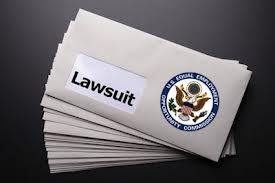
President Johnson gives Martin Luther King, Jr. the pen he used to sign the Civil Rights Act
This article was written by Rick Dacri and was originally published in the York County Coast Star on July 31, 2014
I’m old enough to remember the segregated South; the race riots of the 60’s; when jobs were divided between jobs for men and jobs for women; when schoolteachers were asked to resign because they became pregnant; and when older workers were forced to retire. These practices have ended, for the most part, because of the passage of the Civil Rights Act of 1964, an act designed to end segregation; an act that also changed the American workplace. As we celebrate the fiftieth anniversary of its passage; it is helpful to look back to understand where we came from, to appreciate the progress we have made, and to recognize that work that stills needs to be done.
A little history: While discrimination has been an ugly reality of American life for much of our history, acceptance of this intolerance hit a crescendo in the 1950’s and ‘60s. The Supreme Court’s banning of school segregation in Brown v. Board of Education; Rosa Park’s brave refusal to give up her seat on a public bus; and Martin Luther King, Jr.’s march for racial equality became catalysts for change that ultimately resulted in the passage of the Civil Rights Act. That single piece of legislation, which barred discrimination based on race, color, creed, sex and national origin, advanced equality and changed America and its workplaces forever. While discrimination in some forms still exists today, the walls of intolerance began to crumble by the force of that law. Since its enactment, Congress has passed subsequent laws barring discrimination based on veteran’s status, disability, pregnancy and genetics. On the state level, protections are now afforded to individuals based on their sexual orientation.
Today it is hard to imagine a workplace where discrimination was allowed. But it wasn’t long ago when employment was denied because of color or gender; where women were relegated to low paying jobs, rarely being considered for promotion (those depictions of women in the TV series “Mad Men” are real); and when individuals with a disability were rarely considered for employment.
Today we have workplaces that embrace and even celebrate diversity; where women enjoy opportunities once prohibited; and where male only and female only jobs are simply just jobs. Fifty years after the Act’s passage, we have seen both legal changes and cultural changes in how we treat people in the workplace. Overt, blatant discrimination is no longer tolerated. And while that’s a good thing, we still see and experience signs of it. How many times have you heard, or maybe said or thought the following:
- He’s too old to do that
- Can’t hire her, she’s likely to get pregnant
- Got to pay him more than her, he’s raising a family
- Don’t think they’ll fit in with the rest of us
- She just got back from the Afghanistan, not sure she’ll be stable
- She’s slowing down, when is she retiring
- They need to speak English
- They’re taking the job of “real” Americans
Subtle, attitudinal forms of discrimination still abound, preventing real equality and unfairly holding people back. Promotion and pay are new battlegrounds. The glass ceiling prevents many women from achieving comparable pay and entrance to the boardroom. Baby Boomers, who are opting to remain in the workplace rather than taking expected retirements, are causing tensions with younger decision makers. The memories of 9-11 dredge up intolerance for certain people, religions and beliefs. And the issue of immigration is highlighting differences and resurrecting prejudices and intolerance.
The Civil Rights Act of 1964 set off a wave of change unanticipated by its signers. Our workplace has changed for the better. But much more needs to be done. Employers must be diligent. Managers and supervisors need to understand the law and the importance of creating a positive work culture. Policies should be reviewed to ensure they both meet the law’s requirements, but that they promote an inclusive, diverse workplace.
In fifty years we have come to realize that the single passage of this law both barred discrimination, but it also made our workplace better. Studies consistently show that fostering a diverse workplace with different people, genders, backgrounds and ideas results in a more productive, innovative, creative workforce and profitable organizations. That’s good for our businesses; that’s good for our workers; and that’s good for our country.
If this post was of interest, you may want to read:
- Discrimination Claims: 7 Ways to Effectively Protect Your Company
- Abercrombie & Fitch Accused of Discrimination
- EEOC Reports Nearly 100,000 Job Discrimination Charges
 The issue of sexual harassment just won’t go away. Most employers work hard to make sure that they develop a workplace culture of respect, where issues of harassment are not tolerated. But it is hard enough to constantly monitor behaviors in the workplace. Do you also have to scrutinize your employees actions outside? This is a question I frequently get from clients and unfortunately, the answers is often “maybe.”
The issue of sexual harassment just won’t go away. Most employers work hard to make sure that they develop a workplace culture of respect, where issues of harassment are not tolerated. But it is hard enough to constantly monitor behaviors in the workplace. Do you also have to scrutinize your employees actions outside? This is a question I frequently get from clients and unfortunately, the answers is often “maybe.”






